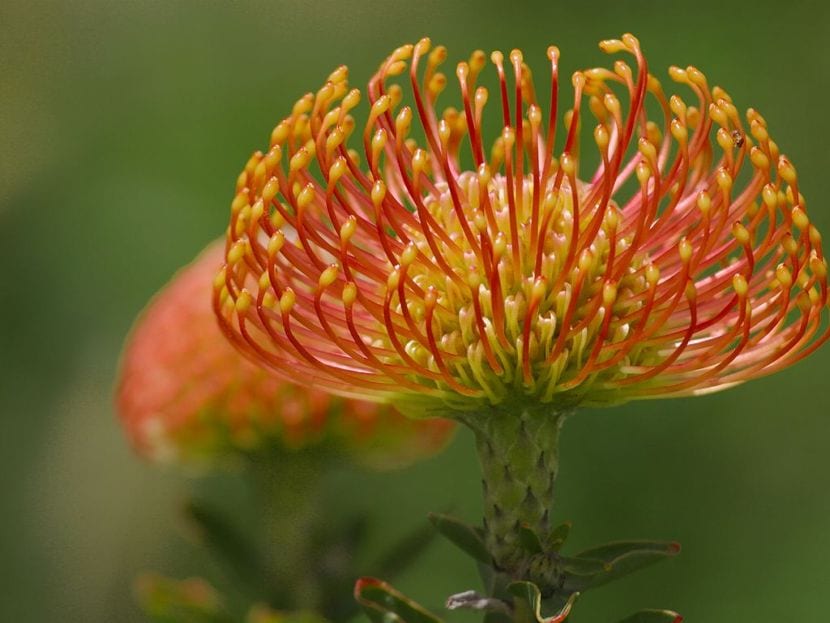
Would you like to know what allowance it is more recommended for your plants according to the time of year in which you are? And what do the letters NPK stand for and what do they have to do with gardening? If you have these and / or other questions related to today's topic, the subscriptions, the time has come for you to get your answers, explained in an entertaining way so that it is well understood.
And if in the end you have any questions hanging around your head, formulate it in the Comments section.
What is compost?

But before knowing when to compost, it is important to know what a compost is. Compost could be synonymous with food. It is food for plants, and in fact it fulfills more or less the same function: to keep the plant alive so that it can carry out its vital functions such as respiration, growth or flowering.
We can find compost in the groundSince the dry leaves when they fall to the ground, they decompose and leave the nutrients in it. Manure is also compost, and any organic material.
Compost types

Our plants, especially if they are potted, need to be paid periodically. Although we have used a new substrate, the nutrients that compose it are gradually absorbed by the roots, until a moment comes when there is nothing left, and that is when we see that the plant no longer grows. The substrate has worn out, it has become old.
To delay this, compost is very important. In the market we find several types:
- Organic: they are those who contribute everything, naturally, but slowly. They improve the quality of the soil without damaging the environment, in fact, the opposite happens: that a poor soil can be converted into fertile soil thanks to the formation of humus. Examples: herbivorous animal manure, compost, peat, egg shells ...
- Liquids: they are the most used due to their effectiveness. But you have to carefully follow the manufacturer's recommendations, as an excess could damage our plant.
- Deficiency correctors: they are those specific to provide a type of mineral in the event that the plant needs it, that is, if for example we have a Japanese maple with chlorosis, in this case we will add iron to solve this problem. Examples are: citric acid, iron sulfate.
- Slow release: are those that are absorbed by the plant slowly. For example: osmocote.
Do all plants need compost?

Yes, of course. But not all obtain it in the same way. Carnivorous plants, for example, not finding enough nutrients in the soil, evolved to the point of being able to digest insects and thus absorb the nutrients of the aforementioned. That does not mean that we can pay them and that they can do without their "hunting", no. The roots of carnivorous plants cannot absorb compost directly through their roots, and may actually die.
Diseased plants or plants that could be sick should not be fertilized.
A little chemistry

Well, having explained what compost is and if plants need it, let's now talk about chemistry. But don't be scared, we won't be very technical. We will explain what NPK stands for and how it affects plants.
NPK (Nitrogen, Phosphorus and Potassium respectively) are elements of the periodic table. These three minerals are considered primary for plants, that is, both the defect and the excess of any of them could lead to the death of the plant.
- Nitrogen (N): stimulates the growth of the entire plant, including flowers and fruits. Its lack can cause plant weakness, chlorosis in old leaves, smaller fruits.
- Phosphorus (P): It helps in photosynthesis and to distribute nutrients, stimulates growth. Its lack can cause weakness of the plant, slowing its growth.
- Potassium (K): It helps in the growth of the plant, and in the transmission of energy. Its lack can cause slow or no growth, low resistance to pests, leaf fall.
When do you have to pay, and with what?

Actually can be paid all year round, but it is more advisable to do it from spring to autumn.
During the growing season, that is, from when the risk of frost passes until after the summer, the nitrogen-rich liquid fertilizers (for growth) and, in the case of a flowering plant, which is also rich in potassium. These fertilizers will make your plants look strong and healthy, and they will be better prepared to withstand the cold.
But in autumn-winter, or in the case of horticultural plants (including fruit trees) we will pay with slow release fertilizers or, better yet, with organic fertilizers.